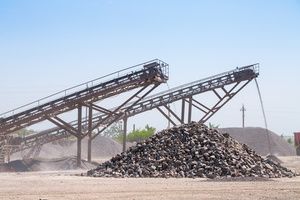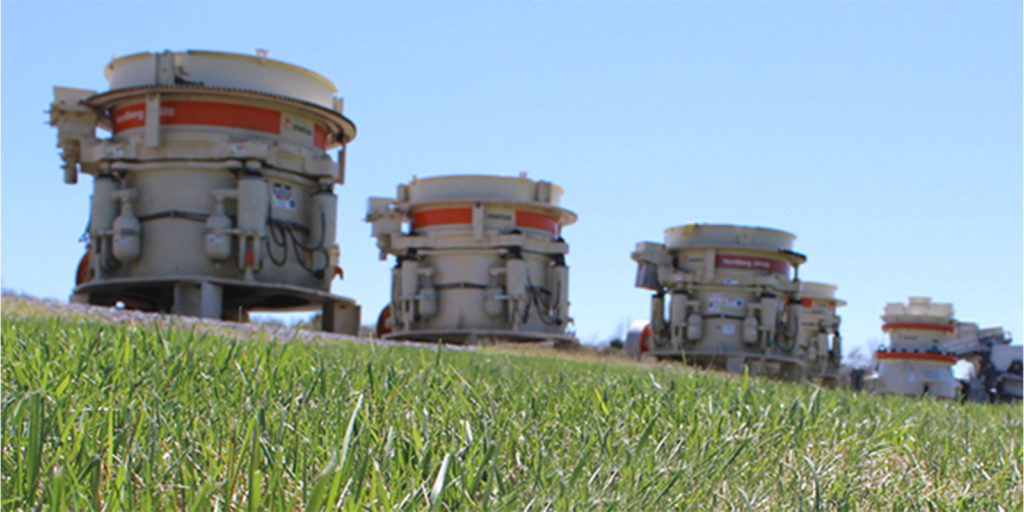When it comes to selecting the right rock crushing machine for your next project, there are a few key factors to keep in mind. Managers need to know about the different types of crushers available, as well as the size and scope of their operation in order to make an informed decision that will maximize cost efficiency.
The process of selecting the right equipment for projects is very nuanced and requires an in-depth knowledge of the unique properties of the different pieces of machinery as well as the needs of your project. At Mellott, we specialize in helping make this process easy so you can focus on getting the job done right.
With that in mind, we have compiled some helpful information that can assist in providing an introduction for construction managers and newcomers to the rock-crushing industry to better explain the different types of rock-crushing machines, how they work, and how to get the most out of them in your future projects.
What Are Rock Crushers?
Rock crushers are a necessary part of many industrial and construction projects. They are mainly used at different stages of the process to break down large rocks into smaller pieces, making them easier to transport and process. There are different types of rock crushing machine, and each has its own set of specifications that managers need to be aware of when selecting the right type for their needs.
The two main types of rock crushers are jaw crushers and cone crushers. Jaw crushers are the most common type, and they use a crushing machine that applies pressure to the material. One of the advantages of using a jaw crusher is that it can handle large pieces of rock, making it ideal for quarries and other larger-scale aggregate production operations. However, one downside of using a jaw crusher is that it can be difficult to control the size of the output particles, which can result in some oversized rocks being produced.
Cone crushers, on the other hand, use a spinning cone to break down the material. Cone crushers can handle much larger rocks than jaw crushers can. This makes them ideal for crushing large boulders or stones. Secondly, cone crushers are able to produce more particles that are smaller than those produced by jaw crushers. This makes them better suited for the secondary and tertiary stages.
Each type has its own advantages and disadvantages, so it’s important for managers to understand the specific needs of their project before selecting a rock crusher.
There are also different sizes and styles of rock crushers that can be used depending on the project requirements in addition to the two main types. For example, some crushers are designed for larger rocks while others are better suited for smaller rocks, while others can produce a specific type of output material. It’s important to select the right size and style for the specific application.
Stages of Rock Crushing

When selecting a rock crusher for a particular stage in the crushing process, it is important for managers to understand the different stages of crushing. By understanding the different stages, managers can select the right rock crushing machine for the job and ensure that the process runs smoothly.
-
Primary Crushing Stage
In the primary stage, large rocks are broken down into smaller rocks. This is done by using a rock crusher that can handle large rocks. The most common type of rock crushing machine used for primary crushing is a jaw crusher.
-
Secondary Crushing Stage
In this stage, smaller rocks are broken down into even smaller rocks. This is accomplished by using a rock crusher that handles smaller rocks and produces a fine output material. The most common type of rock crushing machine used for secondary crushing is a cone crusher.
-
Tertiary Crushing Stage
The third stage of crushing is tertiary crushing. In this stage, the smallest rocks are broken down into even smaller rocks. This is completed by using a rock crusher that can handle the smallest rocks. The most common type of rock crushing machine used for tertiary crushing is a hammer mill.
Key Considerations
-
Operational Costs
When it comes to selecting the right rock crushing machine for the job, there are a few key considerations that managers need to take into account. The most important factors to consider are the type of material that needs to be crushed, the size of the material, and the production requirements.
-
Size
Rock crushers come in a variety of sizes, from small portable units to large industrial-sized machines. Some machines are much more maneuverable for jobs that require some versatility, while others are just meant to be stationary. Keeping these factors in mind is important when considering what type of machine is best for the job site and the needs of the project.
-
Type of Material
The type of material that needs to be crushed will also determine the type of crusher that is best suited for the job. For example, if you need to crush large boulders, you would need a larger crusher than if you were just crushing smaller rocks.
-
What Are Your Production Requirements?
In addition to the size and type of material, you also need to consider the production requirements. How much material do you need to crush per hour or per day? This will help you determine the size and power of the crusher that you need.
Making Informed Decisions With Mellott
Understanding these basics surrounding rock crushing machines will help you determine the proper equipment choices when planning your construction projects. There are a variety of different rock crushing machines available on the market, so be sure to do your research before making a purchase.
For more information on how our team of experts can help in this process and ensure you maximize cost and performance efficiency, reach out to Mellott today by giving us a call at 888-801-1410.

